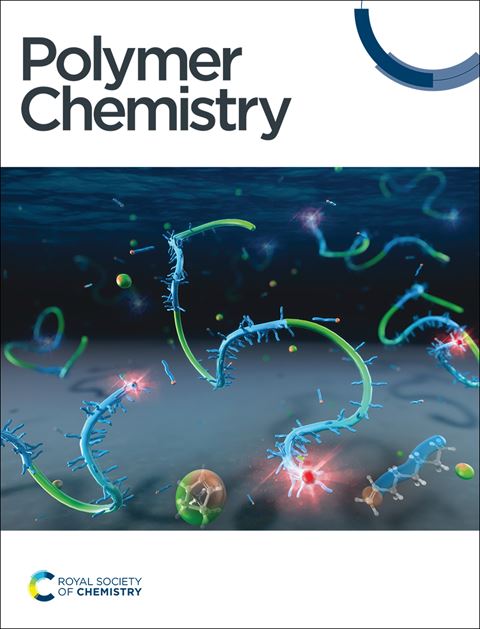Deep eutectic ion-conductive hybrids produced by combining hydroxyl-functionalized silsesquioxane and mono-/difunctional hydrogen bond acceptors
IF 4.1
2区 化学
Q2 POLYMER SCIENCE
引用次数: 0
Abstract
The use of ion-conductive organic–inorganic hybrids with high ionic conductivity, suitable flexibility/viscosity, and good thermal and mechanical properties is a promising approach for the development of next-generation, safer solid-state electrolytes. In this study, a series of new deep eutectic silsesquioxane (SQ) hybrids (DESQs) were developed by simply mixing hydroxyl-functionalized SQ acting as a polyol-type hydrogen bond donor (HBD) with imidazolium- and ammonium-based organic salts acting as hydrogen bond acceptors (HBAs) in the presence of a small amount of difunctional HBAs without the use of volatile organic solvents. The use of cross-linkable HBAs results in improved thermal stability and tunable flexibility (glass transition temperature and viscosity). The combination of hydroxyl-functionalized SQs and imidazolium salt-based mono-/difunctional HBAs afforded hybrids with hydrogen bond networks, showing a suitable balance between thermal properties and high ionic conductivity (4.17 × 10−4 S cm−1 at 25 °C), while maintaining reasonable viscosity (5.62 × 106 mPa S at 25 °C). The ionic conductivity can be improved by adding a lithium salt, allowing for an efficient approach for obtaining safer, greener, and cost-effective electrolytes with good ionic conductivity.

由羟基功能化的硅氧烷和单/双官能氢键受体结合而成的深共晶离子导电杂合体
离子导电有机-无机杂化材料具有高离子电导率、合适的柔韧性/粘度、良好的热学和机械性能,是开发下一代更安全的固态电解质的一种很有前途的方法。本研究在不使用挥发性有机溶剂的情况下,将羟基功能化的硅氧烷(SQ)作为多元醇型氢键供体(HBD)与咪唑基和氨基有机盐作为氢键受体(HBAs)混合,制备了一系列新的深共晶硅氧烷(SQ)杂合体(DESQs)。使用可交联的hba可以提高热稳定性和可调的灵活性(玻璃化转变温度和粘度)。羟基功能化的SQs与咪唑盐基单/双官能团HBAs结合,形成了具有氢键网络的杂化物,在热性能和高离子电导率(25℃时为4.17 × 10−4 S cm−1)之间表现出适当的平衡,同时保持了合理的粘度(25℃时为5.62 × 106 mPa S)。离子电导率可以通过添加锂盐来提高,从而获得更安全、更环保、更具成本效益的具有良好离子电导率的电解质。
本文章由计算机程序翻译,如有差异,请以英文原文为准。
求助全文
约1分钟内获得全文
求助全文
来源期刊

Polymer Chemistry
POLYMER SCIENCE-
CiteScore
8.60
自引率
8.70%
发文量
535
审稿时长
1.7 months
期刊介绍:
Polymer Chemistry welcomes submissions in all areas of polymer science that have a strong focus on macromolecular chemistry. Manuscripts may cover a broad range of fields, yet no direct application focus is required.
 求助内容:
求助内容: 应助结果提醒方式:
应助结果提醒方式:


